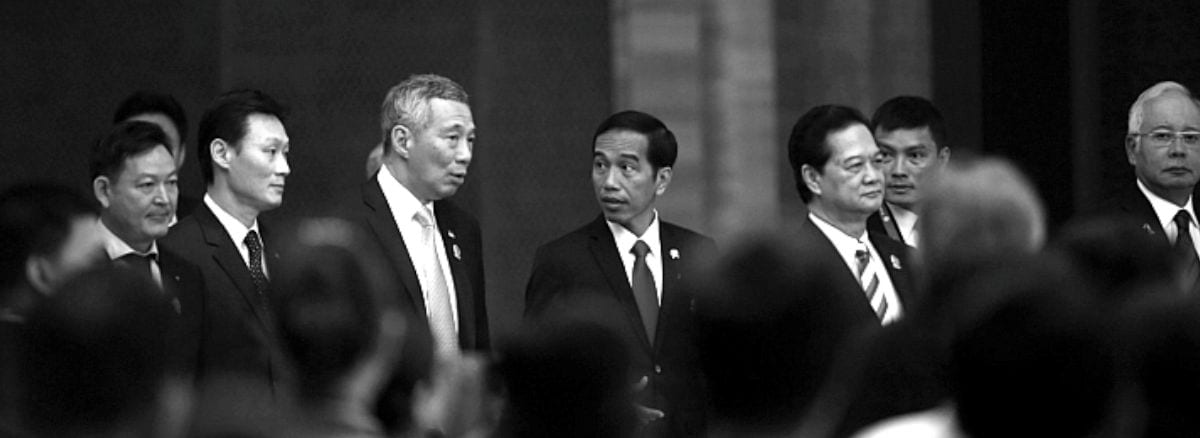Making ASEAN Democratic
Ahmad Rizky Mardhatillah Umar, Research Assistant at ASEAN Studies Center, Universitas Gadjah Mada
ASEAN has held its 24th and 25th Summit in Myanmar this year. The latest Summit has just held this month, discussiong several important topic about ASEAN’s future, including those happened in South China Sea.
The ASEAN Summit is formally regarded as the highest level in ASEAN Structure. It means that the result of the summit will determine the future of ASEAN.
Thus, for ASEAN leaders, the ASEAN Summit is highly important to craft their own interests in Southeast Asia. It is not only a place to discuss important issues in building ASEAN Community (which will be established by 2015), but also an arena to negotiate state’s interest in the regional.
However, I doubt the issue will be concerned by the ordinary people who do not directly engaged with the ASEAN issues. Every year I regularly travel to Banjarmasin and Martapura (a fair town located in South Kalimantan) and rarely I hear any discussion about ASEAN in the public space, traditional market, or warung. ASEAN is still located outside of their minds –even the villagers have no idea what the ASEAN is.
The phenomenon portrayed an unresolved gap in ASEAN: while the ‘talk’ about regionalism is getting more complicated in the elite level, people’s perception about it is still very low. It is, as Amitav Acharya analysed, has been a main constraint to make a participatory regionalism in ASEAN.
Why do the people of ASEAN seem to be ignorant, or in other words, disengaged, with the ASEAN Summit that will direct this regional organisation in the future? John McCormick, in his popular book criticising the European Union, described this phenomenon as ‘democratic deficit’ –the lack of democracy that is generated by the inability of people to articulate their interests in decision-making process.
McCormick argued, following deliberative approach to democracy, that democracy is determined by people’s ability to influence the decision-making process. According to this approach, one can say a transnational governance model (like ASEAN) is democratic if it supports political participation from internal interest group within it.
Participation is central in deliberative democracy. To make a democratic or –to borrow a slogan— ‘people-centred’ ASEAN, the most important aspect that should fulfilled is maintaining participation from any interest group inside ASEAN Member States. In other words, we have to include regional Civil Society in ASEAN governing forum or institutions.
Since 2003, ASEAN has been institutionalised into a more complex form of regionalism. There has been three community inside ASEAN, which are aimed to be established by 2015 –ASEAN Political Security Community, ASEAN Economic Community, and ASEAN Socio-Cultural Community. According to deliberative approach, to make democratic ASEAN, these institutions should be openned for participation and engagement from civil society entities.
But in fact, the development of those institutions has turned into a bureaucratic-technocratic form within ASEAN Secretariats. Thus, we can see a new configuration within ASEAN decision-making process: the political decision will be discussed in a summit which is highly elitist and state-based, while the implementation of those decisions will be conducted in ASEAN Secretariat.
It has emerged a question: where was the space for civil society organisations to engage in ASEAN decision-making process? To respond the existed regime, some Non-Governmental Organisations launched ASEAN Civil Society Conference in 2005, which contained many NGOs in ASEAN Member States to participate and voice their interests in the forum.
At the beginning, the Conference has been greeted by ASEAN Leaders by inviting the Conference representative to the Summit to present the result before the Summit (Dang, 2008). However, as time passes by, relations between NGOs and ASEAN leaders weakened. There is still no room allocated for civil society to engage in decision-making process, particularly at the summit. The political decision still belongs to representative of the States.
Thus, the ASEAN Civil Society Conference –later changed as ‘ASEAN People’s Forum’— still left a gap: it is not adequate to accommodate people’s interests in decision-making process. The ASEAN People’s Forum is suitable to mobilise and consolidate interest group in Southeast Asia, but in the context of advocacy and engaging in decision-making process, there is no adequate room.
I argue that the lack of room for people’s participation in ASEAN is prominently caused by two variables. First, the elitist and state-centrist nature of ASEAN. Historically, ASEAN has been constructed by a consensus of state which was aimed to promote regional peace and stability as well as cooperate in social, economic, and cultural sectors. It is originally designed as a room for states, not people, to negotiate its interest in regions, and consequently makes the regionalism to be very state-centred.
Second, there is no significant effort from ASEAN Leaders to accommodate people’s participation in decision-making process. The 2003 ASEAN Summit only transformed ASEAN’s institutions (into Community) but not the decision-making process. It still lies on the hand of ASEAN leaders who attend the Summit. Thus, the state-centrist nature is still preserved until present and becomes a constraint for people’s participation in ASEAN.
To make ASEAN more democratic, on the context of the upcoming I hereby propose two steps. First, making ASEAN Summit as an inclusive meeting. This step can be conducted by allowing civil society organizations and interest groups to participate in the Summit, not only as observer but also as participant. The ASEAN Summit, therefore, should be perceived not only as an ‘arena of negotiation’ but also ‘place for dialogue’ between ASEAN leaders and its people.
Second, building some institutional bridge to connect ASEAN People and ASEAN leaders. It can be conducted through formalising ASEAN People’s Forum as a part of ASEAN Governing Institution, and then transform it as an influential institution in ASEAN decision-making process. Building a more representative institution as place for people’s representative is necessary, so that the people can articulate their interest in ASEAN.
I believe that if ASEAN leaders have a little political will to open more chances and opportunities for non-state actors to participate in the upcoming Summit, we can optimistically make a more democratic ASEAN in the future.




